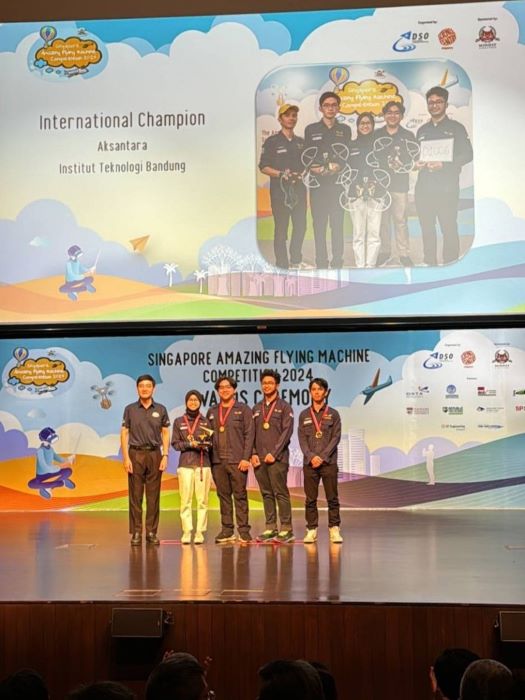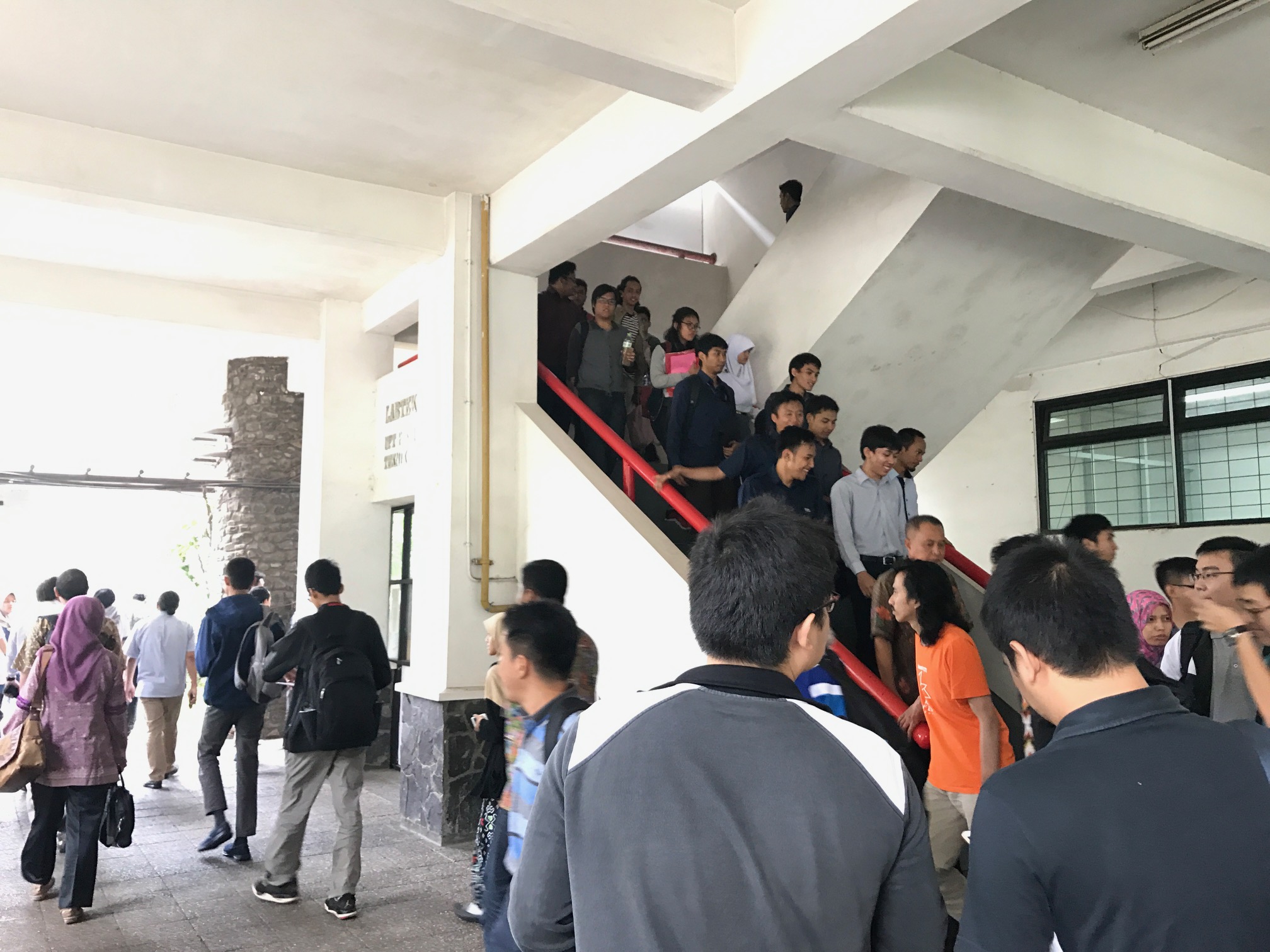36th COSPAR Scientific Assembly 2006

Committee on space research akan menyelenggarakan 36th COSPAR Scientific Assembly di Beijing Institute of Technology (BIT) and Beijing Friendship Hotel Beijing, China. Pertemuan internasional yang akan diselenggarakan pada tanggal 16 – 23 Juli 2006 akan menjadi ajang promosi riset ilmiah bidang luar angkasa di tingkat internasional. Penekanannya tentunya adalah pada pertukaran hasil riset, informasi dan opini, dan untuk menyediakan forum -yang terbuka bagi semua ilmuwan- untuk dapat berdiskusi mengenai masalah yang dapat berdampak bagi riset luar angkasa.
Berikut ini adalah garis besar program yang akan diselenggarakan dalam COSPAR
Scientific Commission A: Space Studies of the Earth's Surface, Meteorology and Climate
A0.1 Global Earth Observation System of Systems (GEOSS): Which Role for Science, Which Benefits for Society?
A1.1 Atmospheric Remote Sensing: Surface Layer, Troposphere, Stratosphere and Mesosphere
A2.1 Biological and Physical Oceanographic Processes from Satellite Data
A3.1 Terrestrial phenomena and land products from space: validation, application and perspectives
Scientific Commission B: Space Studies of the Earth-Moon System, Planets, and Small Bodies of the Solar System
B0.1 The Moon: Recent Results, Science, Future Robotic and Human Exploration
B0.2 Mars Exploration: Latest Results and Status of International Cooperation
B0.3 Cassini-Huygens in the Saturnian System: Planet Saturn, Rings, Titan, Icy (and other) Satellites, Magnetospheres
B0.4 Small Bodies Exploration
PSD1/B2.1 Satellite Dynamics: Meeting the Challenges of Positioning on Giga-to-Nanometer Scales
Scientific Commission C: Space Studies of the Upper Atmosphere of the Earth and Planets including Reference Atmospheres
C0.1 The Transition between Science Models and International Standard Models (ISO)
C0.2 Advances in Remote Sensing of the Middle and Upper Atmosphere and Ionosphere from the Ground and from Space, including Sounding Rockets
C1.1 Advances in Low- and Mid-Latitude Mesosphere, Thermosphere and Ionosphere Studies
C1.2 6th Thermospheric-Ionospheric-Geospheric (TIGER) Symposium
C2.1 Solar and Extra-Terrestrial Influence in the Middle Atmosphere and Coupling Mechanisms through Dynamics, Composition and Electro-Dynamics
C2.2 Tides, Waves and Coupling Processes from Troposphere to Ionosphere
C2.3 Small Scale Processes in the Mesosphere/Lower Thermosphere Region
C2.4 Meteor Science and Techniques: Composition, Sources, Sinks, and Global Distribution of Meteoric Metals
C3.1 Planetary Atmospheres
C3.2 Planetary Upper Atmospheres, Ionospheres and Magnetospheres
C3.3 First Results from Venus Express
C4.1 Development and Adoption of a New Series of COSPAR International Reference Atmospheric Models
C4.2 Modelling the Solar Activity Variations of Ionospheric Parameters
C4.3 Final Stages of Development of Mars International Reference Atmosphere (MIRA)
C4.4 Progress on the Jupiter International Reference Atmosphere (JIRA) and Initial Consideration of Reference Atmospheres for Saturn and Titan (SIRA and TIRA)
C5.1/D4.1 Space Applications of Dusty Plasmas
C5.2/D4.2 Active Experiments Related to Space Plasmas
Scientific Commission D: Space Plasmas in the Solar System, including Planetary Magnetospheres
D1.1 Structure and Dynamics of the Three-Dimensional Heliosphere
D1.2 Heliophysical Processes: Towards the International Heliophysical Year 2007
D2.1/E3.1 Solar Wind and (I)CMEs: toward Integrated Sun-Earth Connection Science
D2.2/E3.2 Magnetic Coupling in Solar and Stellar Atmospheres
D2.3/E3.3 Probing the Solar Wind: Recent Results and Future Prospects
D2.4/E3.4 The Radiation Environment of the Inner Heliosphere
E2.1/D2.5/E3.5 Scientific and Technological Requirements for Future High-Resolution Solar Physics Space Missions
E2.3/D2.6/E3.6 Energetic Particles and Magnetic Reconnection on the Sun and in the Heliosphere
D3.1 Multiscale Magnetospheric Processes: Theory, Simulations, and Multipoint Observations
D3.2 Global Magnetospheric Dynamics and Energetic Particles
D3.3 Comparative Magnetospheres
D3.4 Ionosphere-Magnetosphere Coupling and Auroral Particle Acceleration
D3.5 Paradigms and Reality of Space Physics: Measurements versus Common Wisdom
C5.1/D4.1 Space Applications of Dusty Plasmas
C5.2/D4.2 Active Experiments Related to Space Plasmas
Scientific Commission E: Research in Astrophysics from Space
E0.1/H0.4 Small Space Science Missions: Broaden Our Horizons in Space
E1.1 Gamma-Ray Bursts in the Swift Era
E1.2/H0.2-2 Multi-scale and Multi-wavelength Studies of Black Holes
E1.3 Different Manifestations of Neutron Stars
E1.4 New High-Energy Results on Supernova Remnants and Pulsar Wind Nebulae
E1.5 Challenges in High Resolution Space Astronomy: Astrophysics, Technology and Data
E1.6 Advances in FIR and Submillimeter Astrophysics
E1.7 Origin, Evolution, and Propogation of Cosmic Rays in the Galaxy
E1.8 Shedding New Light on Dark Matter and Dark Energy
E2.1/D2.5/E3.5 Scientific and Technological Requirements for Future High-Resolution Solar Physics Space Missions
E2.2 The Solar and Stellar Interior and Dynamo Mechanism
E2.3/D2.6/E3.6 Energetic Particles and Magnetic Reconnection on the Sun and in the Heliosphere
E2.4 Solar Magnetic Field and Activities
D2.1/E3.1 Solar Wind and (I)CMEs: toward Integrated Sun-Earth Connection Science
D2.2/E3.2 Magnetic Coupling in Solar and Stellar Atmospheres
D2.3/E3.3 Probing the Solar Wind: Recent Results and Future Prospects
D2.4/E3.4 The Radiation Environment of the Inner Heliosphere
Scientific Commission F: Life Sciences as Related to Space
F1.1 Gravitational Effects on Plants and Unicellular Systems
F1.2 Animal Studies in Microgravity and Hypergravity
F1.3/F2.5 International Policy and Guidelines for the Care and Use of Animals in Space-borne Research
F2.1 Space Radiation Biology
F2.2 Physical and Biophysical Models and Simulation Codes for Space Radiation Risk Assessment
F2.3 Recent Radiation Measurements and Calibration
F2.4 Protection Issues in Connection with Human Missions to Mars
F3.1 Organic Chemistry in the Solar System and other Planetary Systems: Exo-, Astro-, and Cosmo-biological Aspects
F3.2 Interstellar/Protostellar Organic Chemistry
F3.3 Boundaries of Life
F3.4 Biosignatures
F4.1/F4.2 Closed Ecological Systems for Earth and Space
F4.3 System Analysis and Optimum Integration of CELSS for Long-Duration Missions
F4.4 Influence of Spaceflight Environments on Biological Systems
F4.5 Closure as a Specific Property of Manmade Ecosystems and Biospheres
F4.6 Space Environment Effects on Systems Biology, Monitoring Using Bio-Informatics
F5.1 Integrated Physiology in Microgravity and Simulation Studies
F5.2 Psychological Issues in Connection with Human Long-term Space Missions
Scientific Commission G: Materials Sciences in Space
G0.1 Gravitational Effects in Physico-Chemical, Transport and Bio-Processes
Scientific Commission H: Fundamental Physics in Space
H0.1-1 Tests of General Relativity
H0.1-2 Gravitational Waves in Physics and Astronomy
H0.2-1 Particle Astrophysics
E1.2/H0.2-2 Multi-scale and Multi-wavelength Studies of Black Holes
H0.3 Condensed Matter and Matter Wave Interferometry in Space
E0.1/H0.4 Small Space Science Missions: Broaden Our Horizons in Space
Panels (Satellite Dynamics, Scientific Ballooning, Environmentally Detrimental Activities, Standard Belt Environment Modelling, Space Weather, Planetary Protection, Capacity Building) and Special Sessions
PCB1 Opportunities for Capacity Building Associated with the IHY
PEDAS1 Space Debris
PPP1 Planetary Protection Policy and Planning
PPP2 Planetary Protection Technologies and Concepts
PRBEM1 Empirical and Theoretical Models of the Geospace Radiation Environment
PSB1 New Era in Ballooning for Advanced Scientific Missions
PSD1/B2.1 Satellite Dynamics: Meeting the Challenges of Positioning on Giga-to-Nanometer Scales
PSW1 Space Weather: Observations and Modeling for Applications and Operations
Special 1 Space Science Education (Programs, Styles, Strategies, Practice)
Special 2 Space and Earth Science Education and Outreach
untuk informasi lebih lanjut, silakan kunjungi, http://meetings.copernicus.org/cospar2006/index.html atau http://www.cospar2006.org/

scan for download





